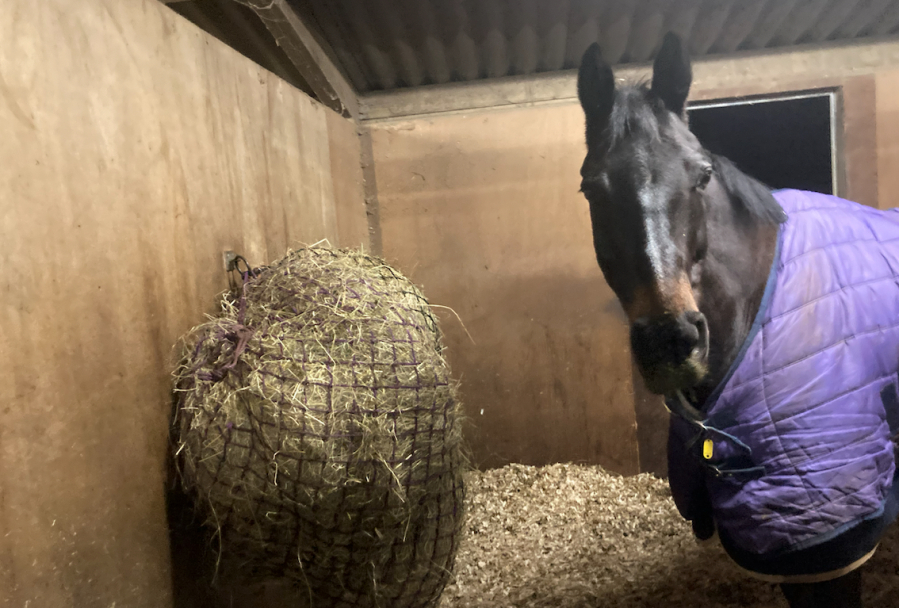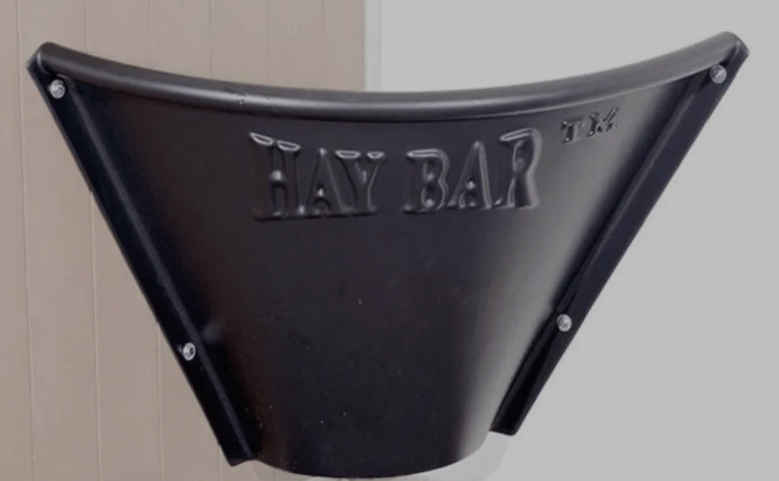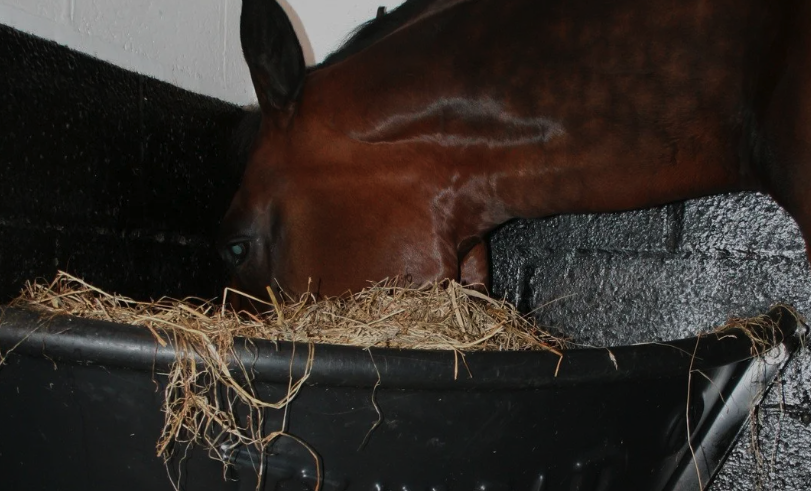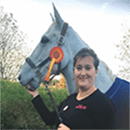Your Horse is supported by our audience and when you purchase through links on our site, we may earn an affiliate commission. Here’s how it works
I’ve always preferred to feed my horses from the floor. As I have mostly always owned and ridden ex-racehorses on my yard, I haven’t had to worry about them becoming overweight — in part thanks to their Thoroughbred genes but also because they have always been fit and in regular work.
One of the biggest complaints I hear about feeding hay on the floor is waste — being stepped on, urinated on (or worse), getting mixed into bedding — and, yes, it does happen.
But my horses are on straw beds and eat hay grown in my family’s fields. Any ‘wasted’ hay comes out of the stable and goes into the cows, so actually it is all used in one way or another.
This all changes, however, when I relocate for work and take my horse with me.
Not ideal for windsuckers
Bee — my £500 Ascot Sales bargain who turned out to be the most amazing all-rounder — moves to a very smart yard where all stables were kitted out with hay bars.
This is my first experience of using one and, as Bee is now on a shavings bed, I think it’s the ideal solution for preventing waste.
It will also allow him to continue to eat in a more natural way compared to a haynet or rack.
Alas, what I haven’t told you yet is that Bee is also a chronic windsucker and that lovely round, smooth edge is perfect for him to get his teeth around.
After a few weeks of relentless windsucking, the Hay Bar is starting to come loose and so I take it out and resume feeding piles of hay in the corner.
I dislike filling haynets
I just want to be clear here that the Hay Bar did it’s job well, Bee just isn’t a suitable beneficiary — and I suspect this is possibly true of all horses who crib or windsuck to the same extent that he does.
Fast forward four years — and after the sad passing of my beloved Bee after a particularly nasty bout of colic — I have a new horse in my life: King Muro.
King is another dark bay ex-racehorse who loves hacking, galloping fast and looks uncannily like his predecessor, but he doesn’t windsuck or crib. (Hooray!)
This immediately puts him into the ‘suitable candidate for a Hay Bar’ box. However, when I start riding him, it is on a share basis.
So as much as I dislike filling haynets morning and evening — and watching him constantly tug his head and neck to the left as he pulls hay free — it isn’t my decision to make (or change).
Two months later, my share turns into a full loan.
Guess what the first thing is that I change?
Yep, I go straight on to the Hay Bar website and make a purchase.
Price and size options
I pay £88.34 for my hay bar (price correct as of January 2022) which arrives a few days later. This price includes a postage fee of £16.67.
I opt for the Classic Black Horse Hay Bar, which is about 36 inches high and takes around 20 inches of floor space. The top edge takes approximately 30 inches of wall space.
According to Hay Bar, this size is designed to hold a complete small bale of hay in slices. I feed from round bales so I can’t confirm this for definite, but it sounds about right.
It is possible to pack a lot in and King never runs out of hay at night.
There is also a pony size option (27 inches high), which is said to hold half a small bale of hay, and you can choose it in black or pink.
As well as allowing King to eat his hay in a more natural position, I also real like that the bar is made from 100% recyclable material.
Hay Bar also claims that is it durable and rust and rot proof, and I have not had any issues with it since buying it three years ago.
Nor has it come loose from the wall — further confirming my thoughts that Bee was the issue here, not the Bar itself.
Fixing it in place
My Hay Bar arrives a few days later and I rope my partner, Tom, into coming to the yard to put it up.
The bar comes with pre-punched nail holes, but not the fixings themselves. So we drive to the yard via Homebase in order to buy some (not the most of enjoyable of stop-offs for my two-year-old, who comes with us, but needs must).
Tom chooses the recommended 9cm bolts and 3cm washers.
An electric drill is the only way to get said bolts through the very solid wooden stable panels.
King’s stable door is sliding and so we have to ensure it will still open before we commit to drilling. They’re not easy to move once up!
We place the top few bolts first before putting the lower ones, as recommended by Har Bar, because this helps to ensure it is straight and flush to the wall.
King’s verdict
About 45 minutes and six nuts and bolts later, the hay bar is in place, in the front left corner of King’s stable.
It is raised several inches off the floor (Hay Bar recommends around 40mm) so that I can sweep out underneath regularly and prevent a build up of mouldy hay at the bottom.
The Hay Bar is designed to sit flush to the stable on the sides but not quite at the very bottom, which means small bits do fall out.
This, coupled with the space we leave at the bottom, is good for hygiene as any old uneaten hay is easily swept away.
I soak my hay, so the bottom space also means that no water gets trapped.
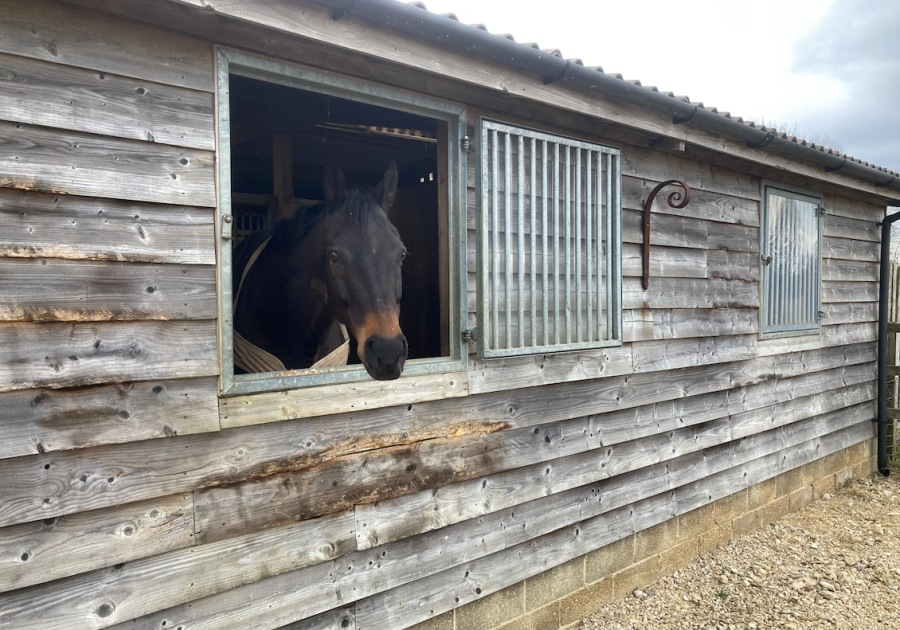
Hay consumption increases
King is intrigued by the bar when I take him into the stable for the first time.
He sniffs at it a few times before sticking his head in and bringing it back out with a mouthful of hay.
Then he goes to look out his window to check out a noise (King’s stable is in a barn, with a window at the back so that he can see outside) before coming back to eat more hay.
Previously, King’s haynets were in the middle of a side wall, which meant he couldn’t see a lot and any loose hay fell on to his bed.
Thanks to the Hay Bar, his view is much better and he can eat while watching the comings and goings on the yard. I believe it has led to him eating more, which is a bonus (remember his skinny Thoroughbred genes).
The hay is also well clear of his bed.
Yes, some hay still does end up on the floor but very little, and rarely does it become mixed in with his shavings.
Suitability
It is important to choose the correct size for your own equine. There is a guide to this on the Hay Bar website.
Basically, if it is too high, your horse or pony will be eating with their neck too high — or they may be squashing the bottom of their neck as they try to reach the hay inside.
King is 16.2hh with a lovely long neck and we have found the sweet spot so that he has his neck down to eat.
He is a poor doer, and I fill it to the brim during winter so that he has ad lib forage that will last all night.
This meant that he is eating with his head up to begin with, although he soon eats it down to a low level.
King never runs out of hay, so I know the Hay Bar is plenty big enough, and I like to hide tasty treats like carrots in it for him to find.
I just have to be careful when doing this that the hay level wasn’t so high that he would fling it around the stable with his head while trying to find the next yummy carrot…
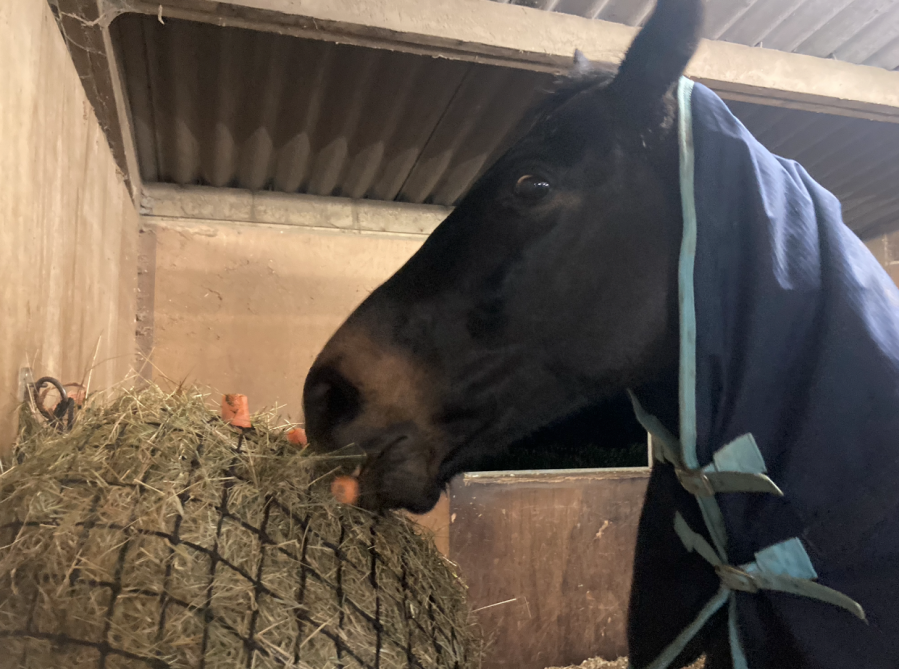
Final thoughts
Unlike Bee, King does not windsuck or crib, and the hay bar stays in place for the next six months.
Sadly, I lose King due to an injury after this time span.
However, I still believe that the Hay Bar was such a good investment. I think he liked it as much as I did!
It is a very good middle ground between using a haynet or feeding from the floor.
As well as the physical and mental benefits for him, it saved me a lot of time too — and as a busy working mum of two, this is a very welcome bonus.
I plan to find a new equine partner in the near future and another Hay Bar is on my must-have list.
In fact, I think my children’s ponies will have one too.

